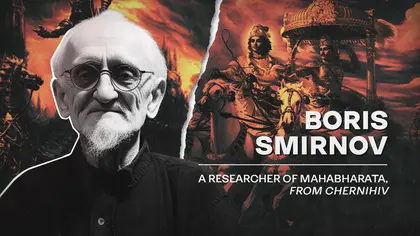BORIS LEONIDOVICH SMIRNOV was a neurosurgeon, the fi rst to characterize viral encephalitis type A; a philosopher, historian, linguist, Sanskritologist: the author of the most complete translation of the Mahabharata, an ancient Indian epic and one of the largest literary works ever written.
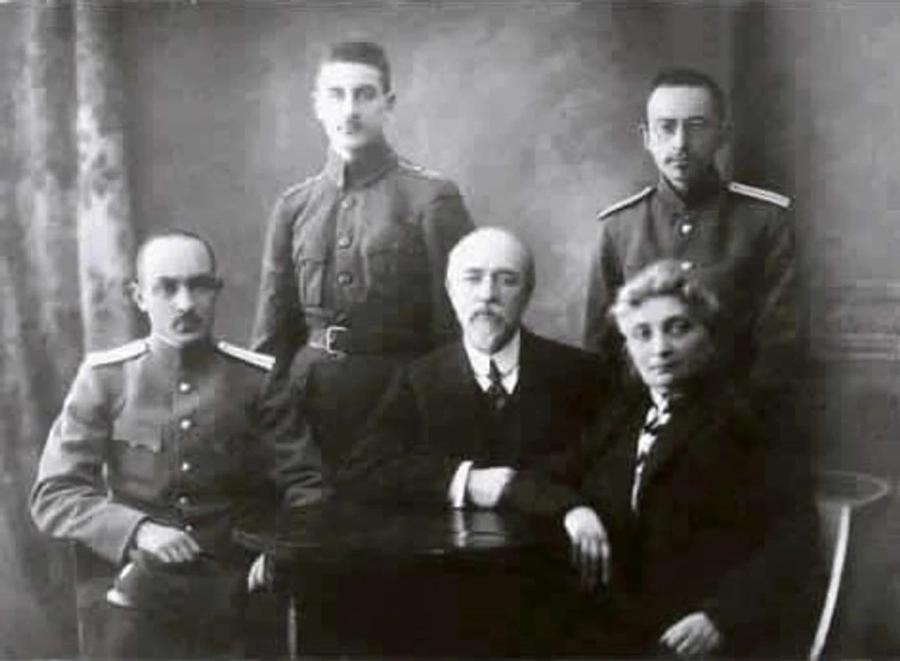 Smirnov family photo. Sitting: his brother Alexander, father, mother. Standing: his brother Oleg and Boris Leonidovich Smirnov himself
Smirnov family photo. Sitting: his brother Alexander, father, mother. Standing: his brother Oleg and Boris Leonidovich Smirnov himself
INCLUDED INTO THE GOLDEN FUND OF TURKMENISTAN
The career and future of this doctor’s son, who himself received his education at the Military Medical Academy, could have ended in the 1920s. It was then that Boris Smirnov became a member and founder of several occult orders. He was arrested and sent to Yoshkar-Ola for three years without the right to return to Ukraine. He was also banned from living in Moscow and several other large cities of the USSR. But Smirnov did not fall into obscurity even under these conditions. In 1935, he moved to Turkmenistan, where he focused on medicine, namely: on general clinical issues, the features of neurological diseases, the problems of treating neurobrucellosis.
JOIN US ON TELEGRAM
Follow our coverage of the war on the @Kyivpost_official.
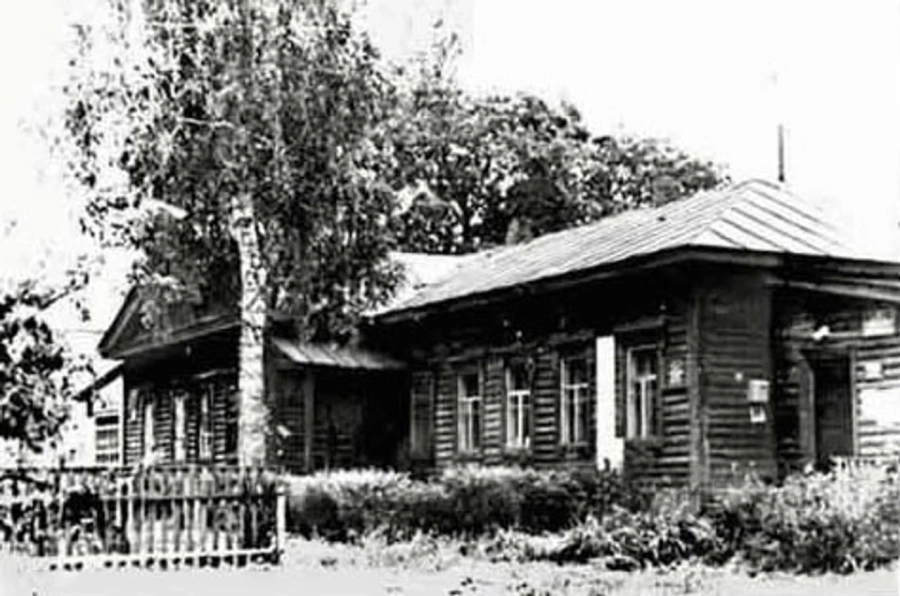 The Smirnovs' house in Kozlianychi, Chernihiv region.
The Smirnovs' house in Kozlianychi, Chernihiv region.
Smirnov became the first person in the USSR to characterize viral encephalitis A and to operate on a protrusion (bulge) of an intervertebral disc. He also stood at the origins of Turkmenistan’s neurological, neurosurgical, and balneology services, and organized a neurosurgical department at the Institute of Neurology and Physiotherapy. He performed several hundred of the most difficult surgeries.
During the Second World War he assisted the wounded in the numerous evacuation and rehabilitation hospitals in Ashgabat, and acted as a consultative neurosurgeon. In four years, he performed about 150 of the most complex surgeries. Smirnov was added to the Golden Group of Turkmenistan’s most prominent figures.
HE WAS SAVED BY A MIRACLE AND SAVED OTHERS
On the night of October 6, 1948, a horrific earthquake occurred in Ashgabat, killing every third inhabitant of the city. Smirnov and his wife were rescued thanks to the bookshelves, they held up the weight of their collapsed ceiling. Having emerged from the rubble, the doctor immediately ran to the center of the city, telling everyone on the way to take the wounded to the main square. After an hour he had organized a field hospital there.
It was an apocalyptic picture: the operating room was office desks covered with sheets and lit by torches. Surgical instruments were sterilized by boiling them in water over campfires. The wounded needed surgery after surgery after surgery on the most difficult cases, those patients with cranial injuries, Boris Leonidovich operated himself. He assisted the doctors operating on other patients. This went on for several days in a row.
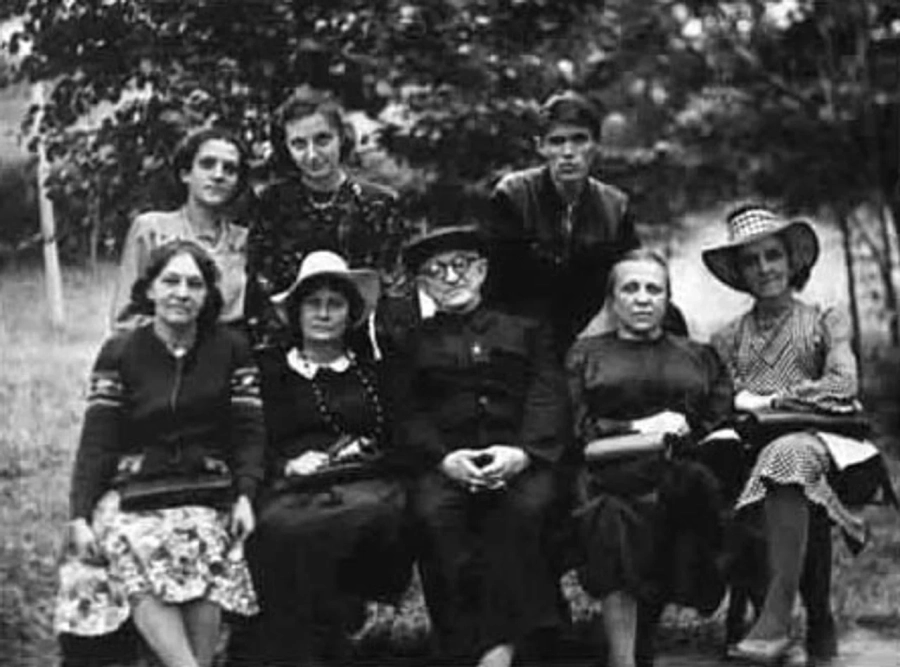 Boris Smirnov with his friends.
Boris Smirnov with his friends.
HIS HOBBY MADE HIM WORLD FAMOUS
The profession of the doctor was in his blood – his father was also a physician. As for his hobby – his mother was a writer. It is his literary and historical fascination that brought international recognition to Smirnov.
The ancient and sacred Indian epic the “Mahabharata” (“The story of the great descendants of Bharati”), is a masterpiece of world literature, in which the wisdom of millennia is concentrated. The work is not only brilliant, but also a very complex document, and difficult to translate. At the beginning of the last century, scientists thought that “it was impossible to properly translate it into any of the European languages”.
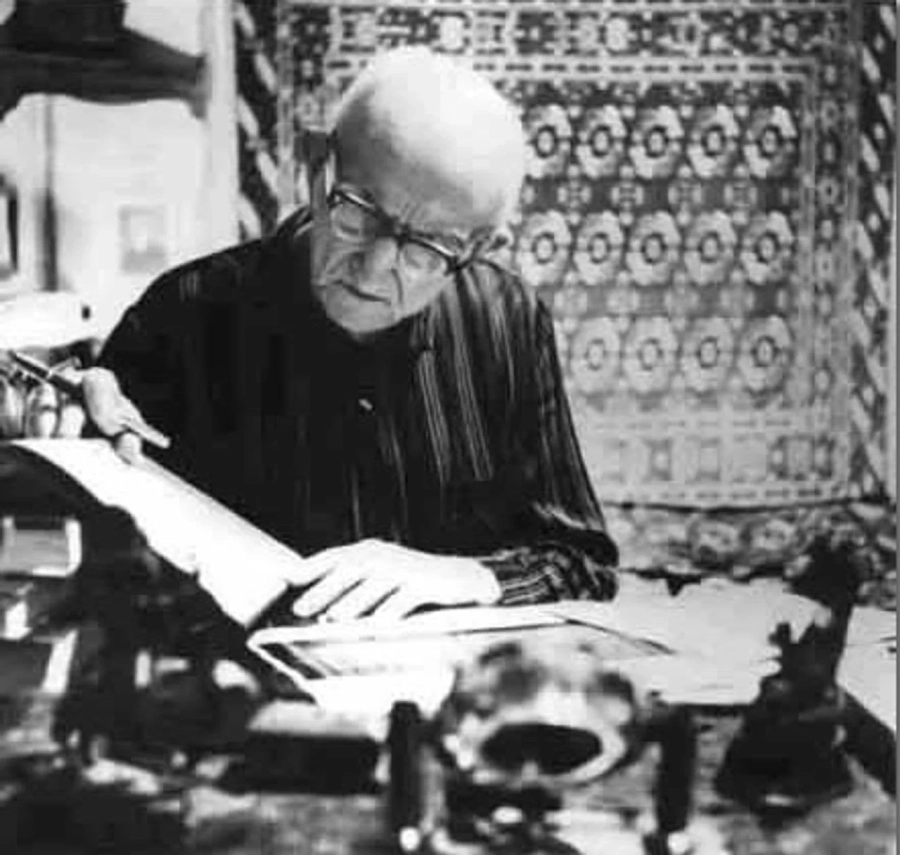 Boris Smirnov, Ashgabat, 1966.
Boris Smirnov, Ashgabat, 1966.
Smirnov managed to refute this notion, and to this day his work is considered the most complete translation of the epic yet made. It has been used by translators in many countries to make the most accurate translation of “Mahabharata” in their own language. His recipe for success is simple: an enormous amount of work multiplied by a brilliant idea. When translating the Sanskrit shlokas (two-line verses), Boris would first make 16 variants, throw them all out, and then craft a final one. To clarify the extent of his work – his final set of finished, translated verses after of 22 years of work numbered about 23,000 shlokas.
His genius was in understanding that the spirit of Sanskrit most accurately corresponds to a completely different poetic form: “After a long search over 20 years, I was convinced that it is more correct not to press the text into exact schemes of syllables and stresses, but to accept the principle of free verse.” The successful combination of his translations with this insight was what brought Smirnov to the literary and scientific Olympus.
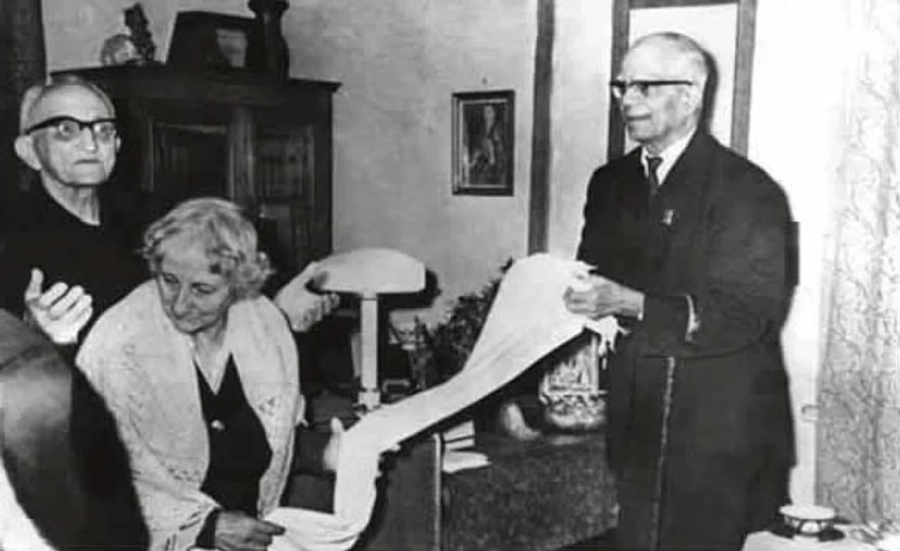 Ambassador of India to the USSR Menon K. visiting Professor Borys Smirnov in Ashgabat in 1966.
Ambassador of India to the USSR Menon K. visiting Professor Borys Smirnov in Ashgabat in 1966.
INTERESTING FACTS
- He studied at the same high school as Mikhail Bulgakov (First Kyiv gymnasium).
- Boris Leonidovich Smirnov’s mother, Sofia Mitrofanovna Smirnov, wrote novels and stories that were published in magazines for children and adolescents. She used the pseudonym Kozlenytska to publish Ukrainian folklore (thoughts, songs, and legends). Her son Boris assisted her in this work.
- Smirnov was a polyglot: he knew English, Hebrew, Italian, Spanish, Turkmen, Sanskrit, Yiddish, and Polish.
- According to one story, Smirnov got involved in studying Sanskrit by accident, having bought dictionary at the Kyiv central railway station sometime around 1919. His train took three days to arrive at its destination, so the young doctor had lots of time to study.
- When, after the earthquake in the capital of Turkmenistan, he was dragged out of the rubble, he risked his life and to go back and fish out the manuscript he was working on.
- He had been suffering from heart failure for more than 10 years and was forced to almost completely reduce his mobility. Much of his “Mahabharata” translation was made while he was already bedridden.
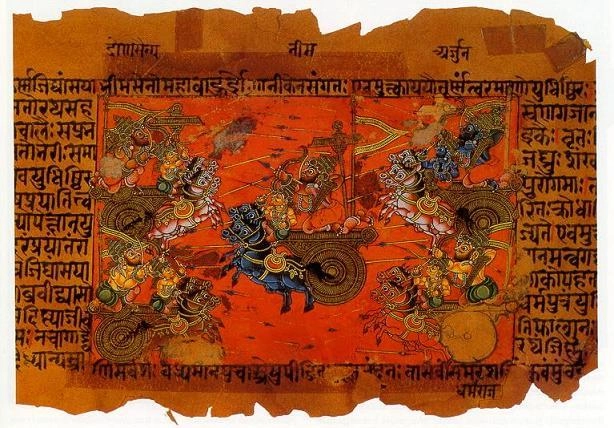 One of the Mahabharata manuscripts.
One of the Mahabharata manuscripts.
- One of the texts translated by texts, the Bhagavad Gita (part of the Mahabharata and one of the most important sacred texts in Hinduism) was presented to the first President of India, Rajendra Prasad, during his visit to the USSR in 1960. At that time the name of this Ukrainian scientist was already known in India. Boris Leonidovich was formally invited to India but was unable to visit because of his ill health.
- The gravestone of this scholar in Ashgabat is adorned with a white marble book, a symbol of the Indian epic on which a quote from the “Mahabharata” is engraved: “There is no law above the truth.
- ” Saparmurat Niyazov (Turkmenbashi, the first president of Turkmenistan) called him “a prominent Turkmen scholar”.
- The “Mahabharata” is part of the school curriculum in India.
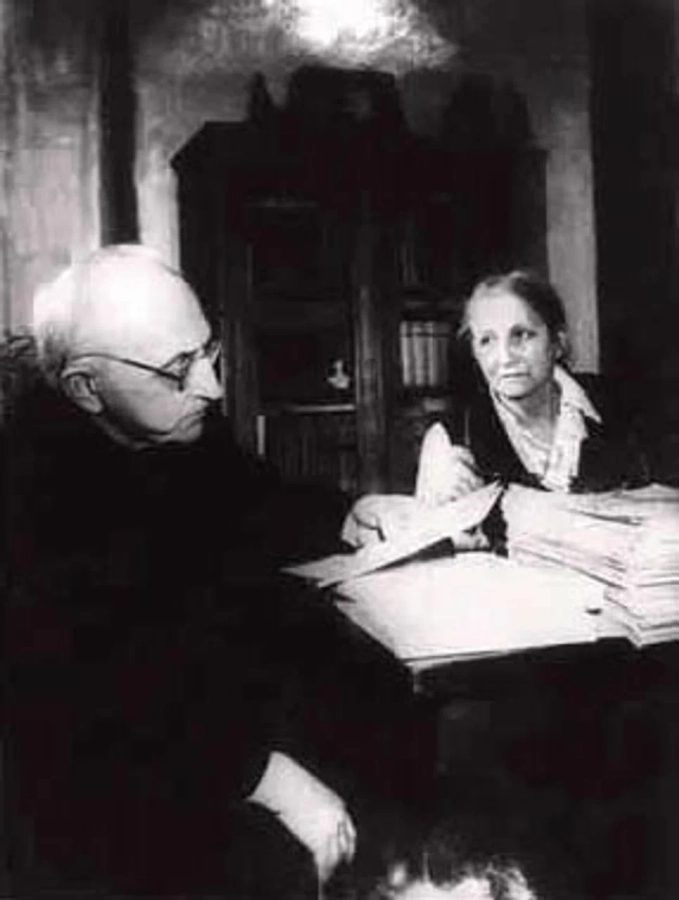 Boris Leonidovich with his wife Lyudmila Erastivna.
Boris Leonidovich with his wife Lyudmila Erastivna.
FROM THE DOSSIER OF BORIS SMIRNOV
• Smirnow was born on December 15, 1891, in Kozlyanychi, Sosnytsia district, in the Chernihiv region.
• He graduated from St. Petersburg High School No. 6 in 1910 and from the Military Medical Academy in 1914.
• He was a military doctor between 1914-1916 and then served as a local doctor, then as a doctor on the draft board in Chernihiv province (1917-1919), a resident of the neurological clinic of the Kyiv Medical University (1920-1929), a consultative neuropathologist at the Yoshkar-Ola Regional Hospital (1929-1935), a fellow of the Turkmen Institute of Neurology and Physiotherapy (1935-1939), and a lecturer at the Turkmen State Medical University (1939-1956).
• He was an academician of the Academy of Sciences of the TSSR.
• He died on May 2, 1967 in Ashgabat.
• There is a Foundation for the Education and Revival of Spirituality named after Academician Smirnov in Turkmenistan, and a Moldovan Association named after him in Chisinau.
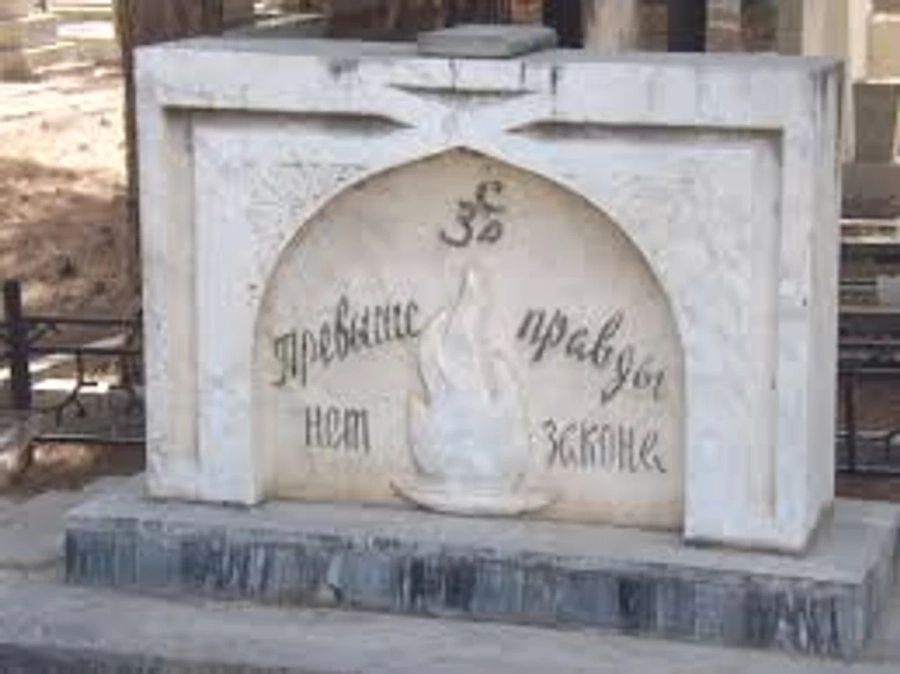 Tombstone at the grave of Boris Smirnov in Ashgabat.
Tombstone at the grave of Boris Smirnov in Ashgabat.
This article by Nadiia Avramchuk and Mykola Sukhomozsky is reprinted with the publisher's permission from the book (UN)Celebrated Ukrainians Who Changed the Course of History, SAMIT-KNYHA, Kyiv, 2020.
You can also highlight the text and press Ctrl + Enter


